Levoit Core 300S Air Purifier review – 'perfect for use in my home's small rooms'
Our Levoit Core 300S air purifier review puts this relatively affordable Smart HEPA filter through its paces to see how well it can improve indoor air quality in a small space

A compact and easy-to-use Smart air purifier with HEPA and charcoal filter, that has a clear air quality display, energy-saving Auto mode, and does a good job of improving air quality in smaller rooms.
-
+
3-stage Pre-Filter, HEPA Filter and Activated Carbon Filter
-
+
Auto mode
-
+
Quiet on low fan speeds and super quiet in Sleep mode
-
+
Easy to use
-
+
Clear display
-
+
Smart App connectivity and voice activated commands
-
+
Compact and lightweight
-
-
Not as responsive as some
-
-
Not powerful enough for use in large spaces
Why you can trust Ideal Home

Quick Menu
Specifications
How I tested
1. Assembly/set up
2. Design
3. Performance
4. Ease of use
5. Noise levels
6. Portability
7. Energy use
8. Filter replacement
Verdict
Our Levoit Core 300S air purifier review puts the upgraded version of the brand's bestselling Levoit Core 300 air purifier to the test, with that easy to miss 'S' denoting that this model is Smart.
That means that, unlike the Levoit Core 300, you can connect the Levoit Core 300S air purifier to Wi-Fi and operate it with voice controls via Amazon Alexa or Google Assistant. You can also use the VeSync Smart App to access additional functionality and monitor your air quality more closely.
The Levoit Core 300S is more expensive than the Levoit Core 300, but it's still very affordable compared to many air purifiers on the market, and it offers 3-stage filtration that promises to capture 99.97% of 0.3 micron air pollutants for its mid-range price tag. That means that it features a pre-filter to trap larger particles such as airborne dust, pet fur, and lint, which in turn helps to prolong the life of the H13 HEPA filter that captures finer pollen and pet dander. The last defence is the activated carbon filter that can extract smoke and odours from the air. There's also the option of adding a replacement filter focused on capturing bacteria and mould spores dependent on your air purification needs.
So how does it perform in practice, and how does it rate in comparison to the best air purifiers on the market? Well, I found it super easy to use, with a compact design that was perfect for use in my home's small rooms where I struggle with having enough spare floor space for a larger air purifier. Read on to find out more.
Levoit Core 300S air purifier review
Specifications
- Recommended room size: 50m2
- Air change per hour: 2 per hour based on recommended room size
- CADR: 240m3/h
- Noise levels: 22-50dB
- Filter type: 3-Stage Pre-Filter, H13 HEPA Filter, Activated Carbon Filter
- Dimensions: H36 x W22 x D22cm
- Weight: 2.7kg
- Wattage: 23W
- Smart App connectivity: Yes
- Timer: Yes (1-24 hours)
- Auto mode: Yes


How I tested

I'm Amy, one of the Ideal Home team's Ecommerce Editors. My job involves putting all manner of products through their paces to find the best recommendations for our readers. I've tested multiple products that promise to improve the air quality in our homes and deliver indoor climate control, including the best dehumidifiers, best fans and best portable air conditioners on the market. I tested the Levoit Core 300S air purifier in my own home to see how it coped with everyday decreases in air quality caused by smoke, VOCs, cooking fumes, and dust.
Assembly and set up
There's very little assembly needed with the Levoit Core 300S. Once it's unboxed you simply need to flip it over, unscrew the base cover and remove the plastic packaging from around the filter before tightening the base plate back up.
Then you can download the VeSync App if you want to make the most of the air purifier's Smart features, or connect it to Amazon Alexa or Google Assistant if you prefer to use voice activated commands. However, the Levoit Core 300S can also be operated via the on-board controls on the top of the unit with only a little sacrifice of functionality.

Design
The cylindrical form of the Levoit Core 300S is pretty pleasing to the eye. And whilst it is sizeable, measuring H36 x W22 x D22cm, it's fairly compact in comparison to many air purifiers on the market.
Sign up to our newsletter for style inspiration, real homes, project and garden advice and shopping know-how
Air is is drawn in through the numerous holes that cover 360° of the lower half of the purifier – which are quite a nice design feature in their own right – and is expelled through the spiralling air outlets at the top of the product.
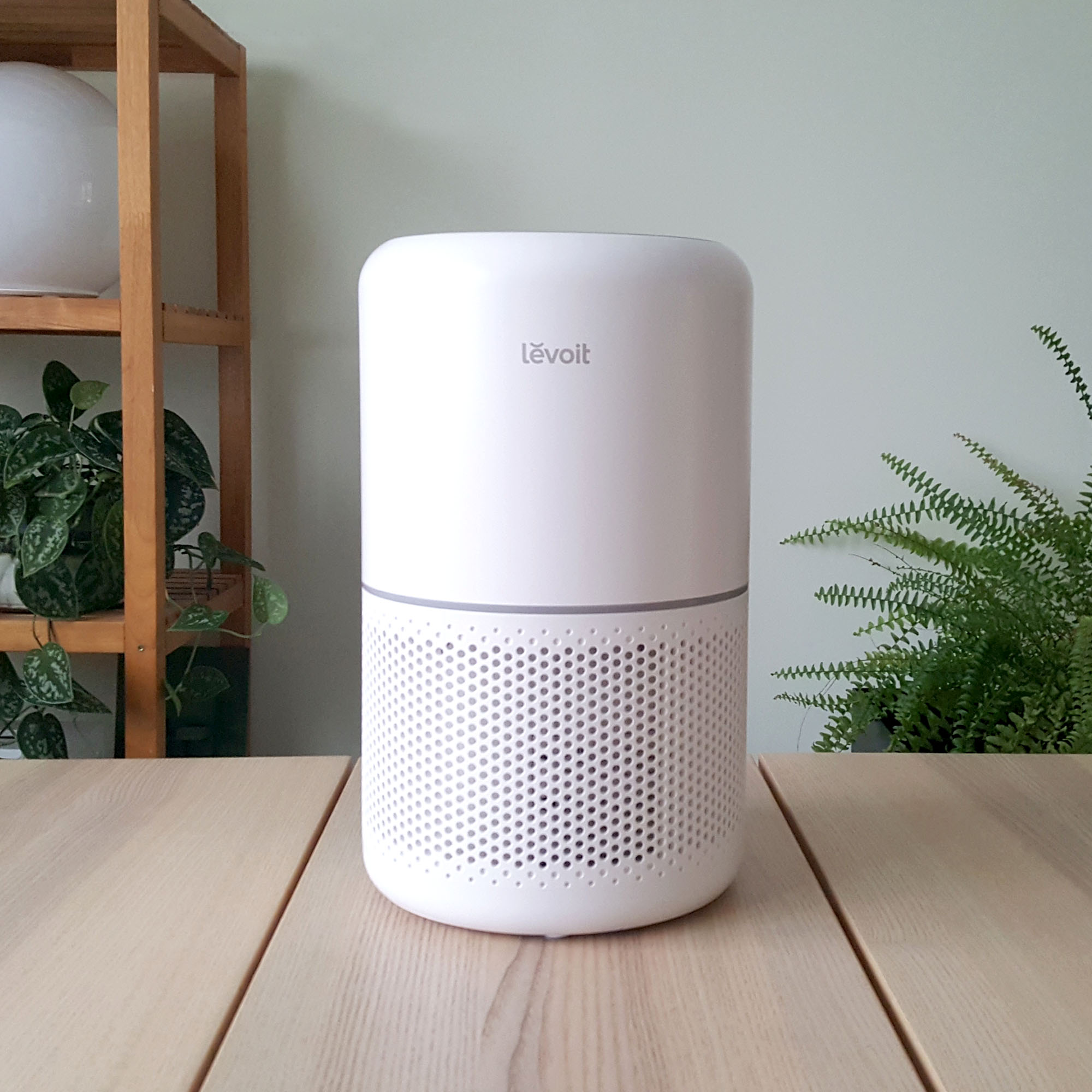
There’s a circular digital display on top of the air purifier whereby you turn it on and off and operate the three fan speeds and various modes, including Sleep mode, Auto mode, a Lock function and Timer that can be set at intervals between 1-24 hours.
You can quickly see what current air quality the air purifier detects by checking what colour the Air Quality Indicator Rings on the digital display on the top of the unit are. Blue means very good air quality, green is good, orange moderate, and red indicates bad air quality.
Using the VeSync App gives you more detailed air quality data, including real-time PM2.5 updates and the ability to see your air quality history for the past week.
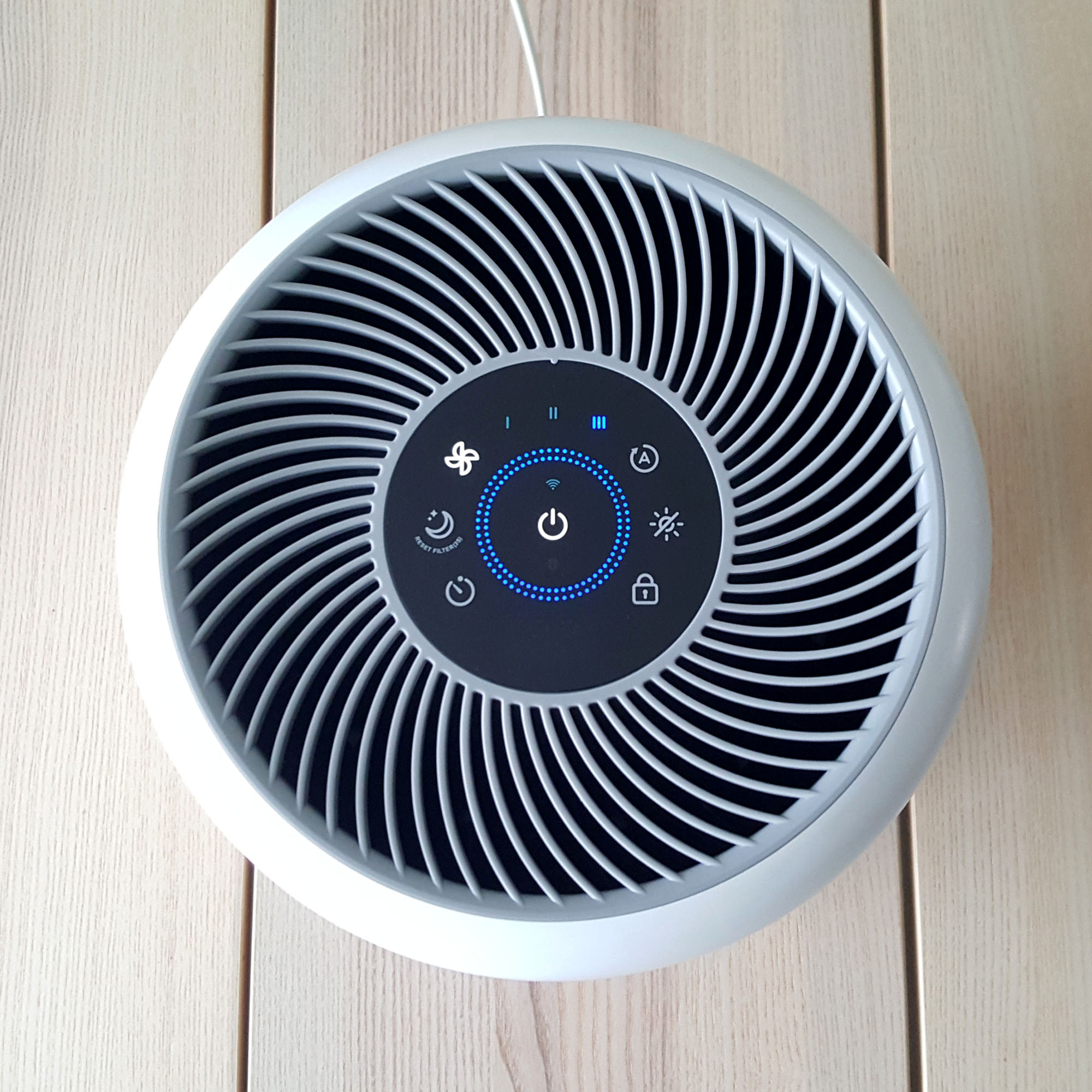
Performance
The Levoit Core 300S offers three fan speeds that you can set manually, or a very easy-to-use Auto mode.
When the Auto setting is chosen Levoit says that the air purifier ‘uses ‘AirSight Plus’ a smart laser dust sensor inside the air purifier to adjust the fan speed automatically based on air quality. For example, if the air quality is bad the fan will automatically be set to high fan speed’.
This is a great feature as it means you can save on energy by only using the fan speed necessary to clean the air, and this is the mode I put the air purifier into to perform the first test.
I was happy to see that when I first turned the purifier on it showed two blue rings on the digital display, indicating that the indoor air quality was currently in the 'very good' range.
To test out if it could pick up on changes to the air quality, I lit a match close to the air purifier and let it burn out to create smoke in the air. In Auto mode it took the Levoit Core 300S around 30 seconds to register the smoke particles and for the Indicator Rings on the top of the display to change from blue to orange. That meant the purifier had registed a drop to 'moderate' air quality so it automatically increased the fan speed to return air quality to 'very good'.
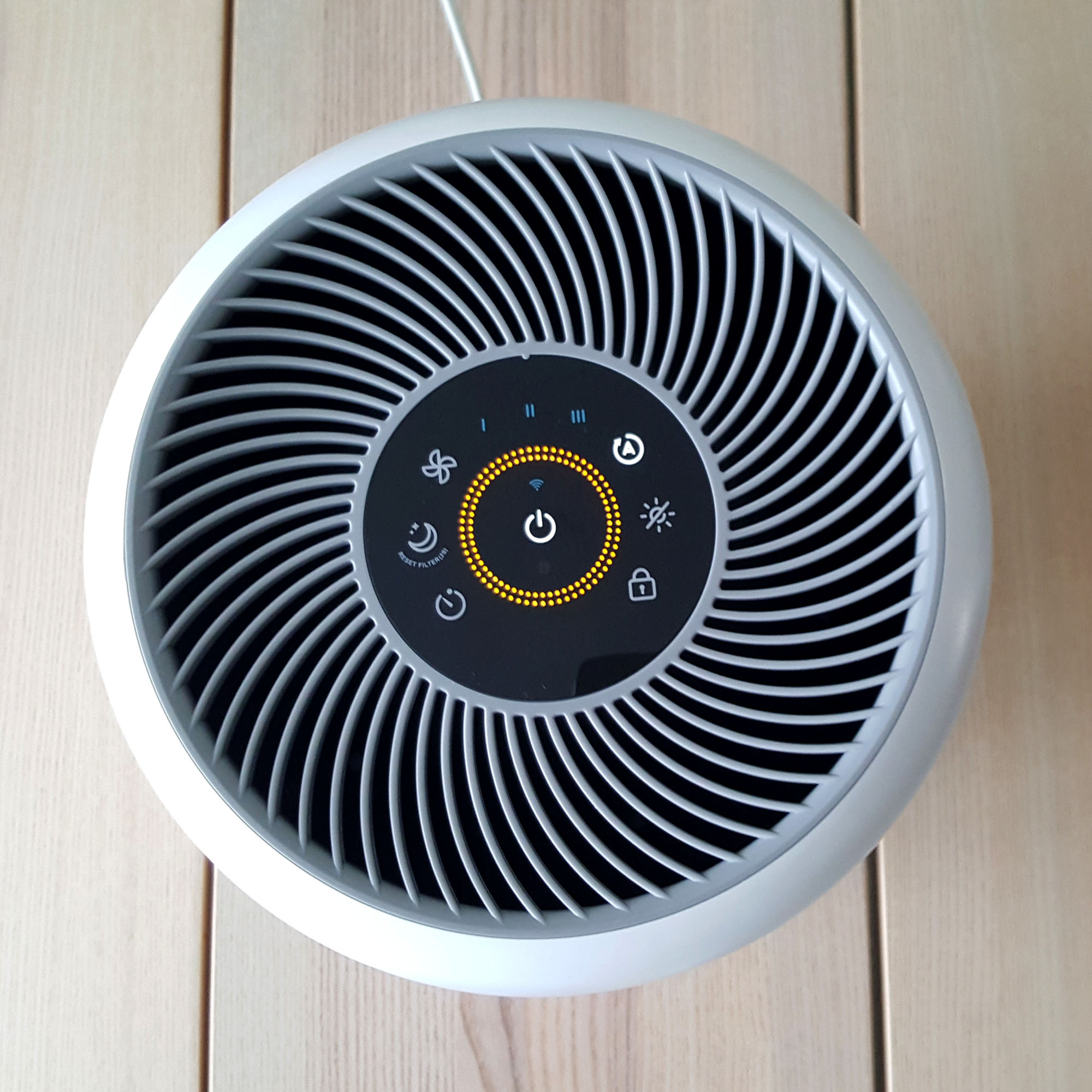
All in all it took 6 minutes 58 seconds for the Levoit Core 300S to clear the air and return to standby mode, shifting through green (good) and then back to blue (very good) air quality. I could still smell a faint aroma of smoke when I left and re-entered the room, but it had certainly removed the bulk of the burning smell.

The same happened when I tested spraying aerosol deodrant in the vicinity of the air purifier. It took around 20 seconds again for the Core 300S to register the VOCs present in the deodrant, and this time the Indicator Rings ramped all the way up to red for 'bad' air quality and soon got to work extracting the worst of the smell.
This time the air purifier took 4 minutes and 14 seconds to return to standby. I could still smell a distinct whiff of deodrant when I re-entered the room, but the purifier had made an obvious positive difference to the air quality.
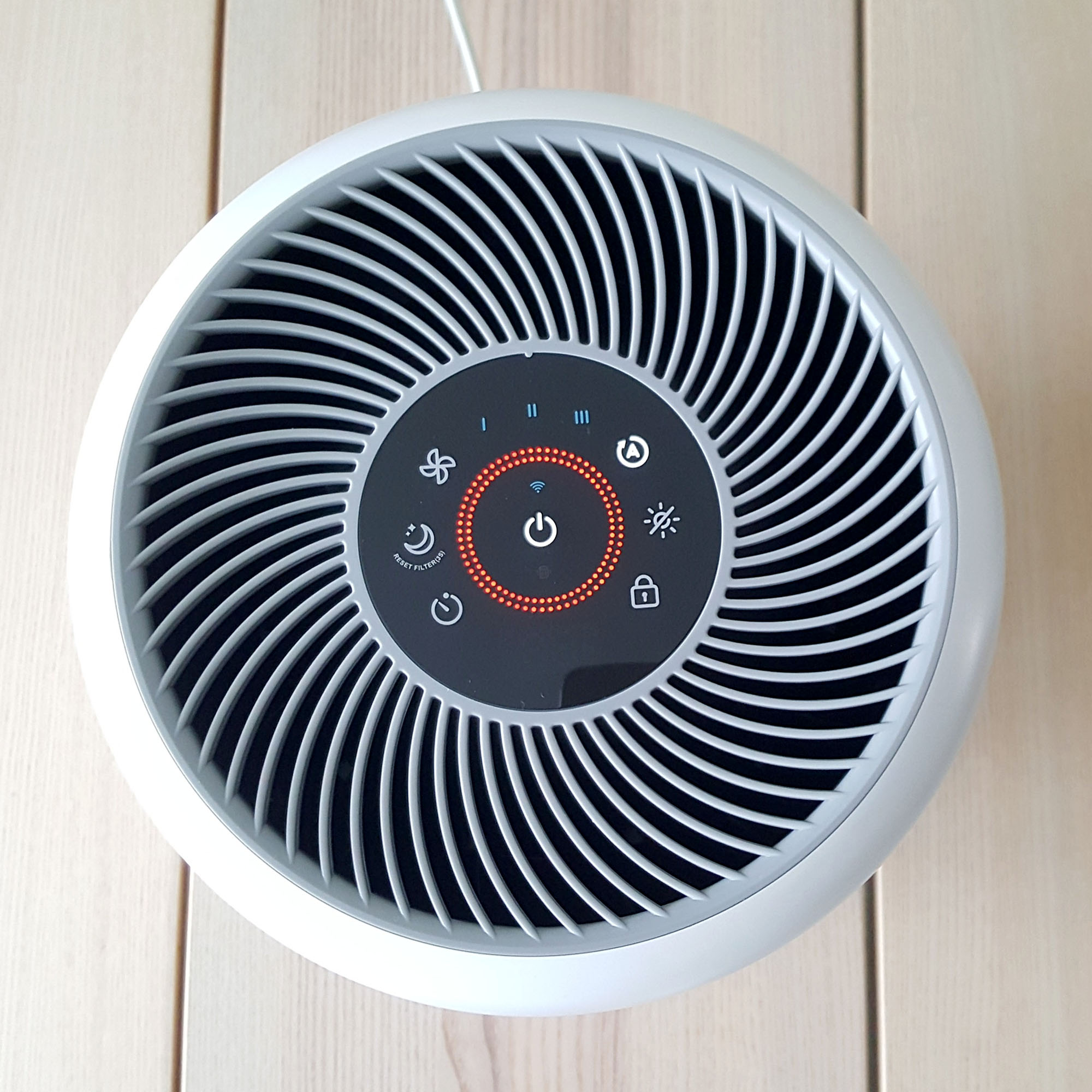
With both the smoke and VOC tests, I found the unit was much more responsive the closer the test particulate was to the base of the unit where the air is drawn in, which is perhaps due to the fact the Levoit Core 300S' air filter (on the right in the picture below) is quite small compared to other models.
In comparison, the air filter of the Blueair Blue Max 3250i Air Purifier (centre below) is far larger, and, despite being more compact in overall size, the Beko ATP5100I Air Purifier filter (left in the image below) also offers a taller, if narrower, surface area.
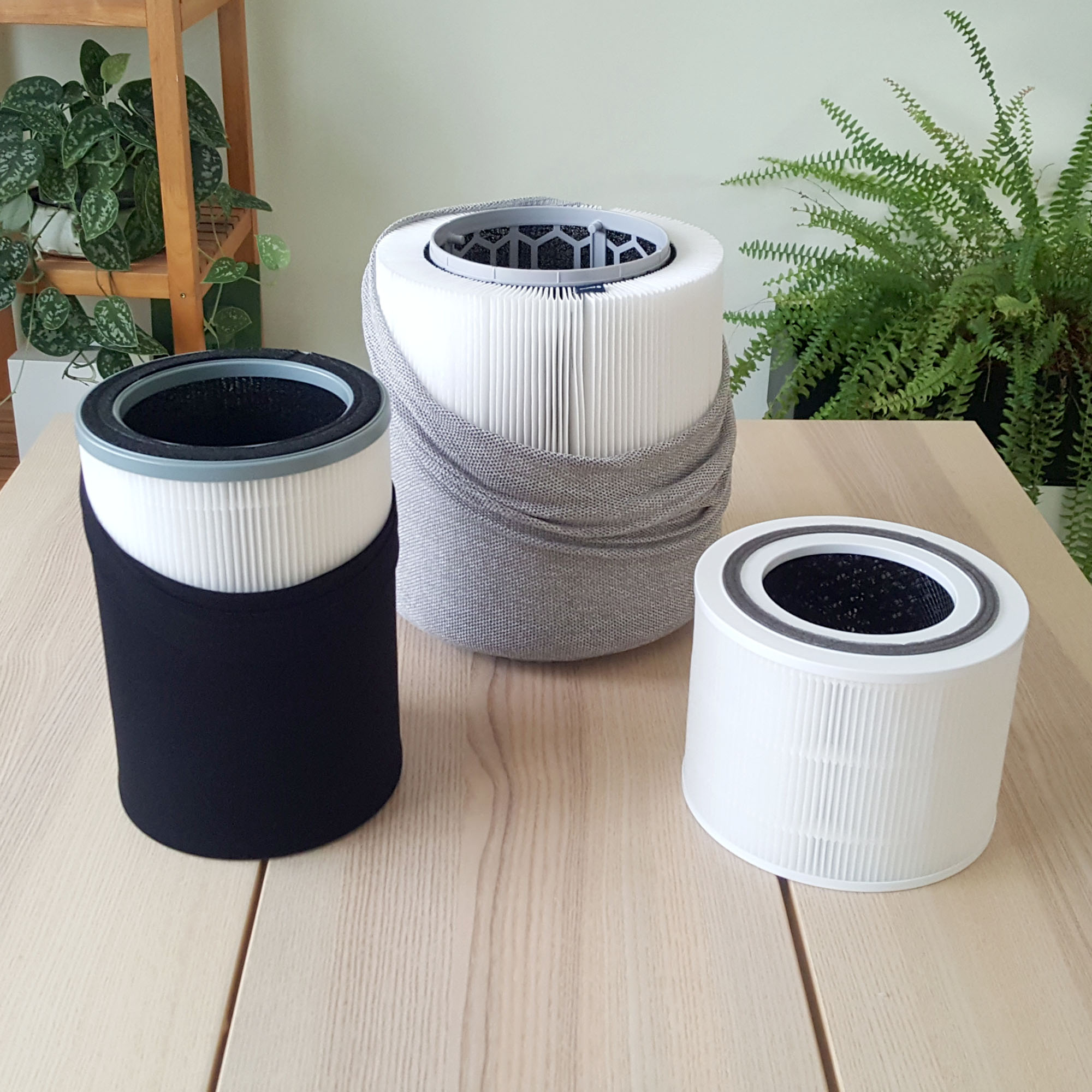
I also tested the Levoit Core 300S in the kitchen to see how it coped with cooking fumes. My kitchen has a very old extractor fan that struggles to adequately remove cooking fumes, so I was interested to see how the air purifier would perform in comparison.
To test out its powers I shut the kitchen door, made sure the windows were closed, left the extractor fan off and started frying two rashers of plant-based bacon whilst the Levoit Core 300S was positioned on the kitchen work surface in Auto mode a safe distance away.
From when the bacon first started sizzling, it did take a while for the Core 300S to register the bacon smell my nose was registering; 4 minutes and 44 seconds to be precise. But, as the cooking fumes started to permeate the kitchen, the Core 300S kicked into gear, shifting the fan speed up several gears as the fumes intensified.
By the time the Core 300S swung into action the bacon had just finished crisping up, so I snuck out of the kitchen, shut the door again, and set to work eating my bacon sandwich. All in all it took 15 minutes and 38 seconds for the Core 300S to finish doing its thing, register the air quality as back to 'very good', and and return to its lowest Sleep fan speed setting.
At this point I re-entered the kitchen to see if my nose agreed with the Core 300S, and although there was still a faint smell of bacon, it was far less noticeable than it would have been had I been reliant on my not very efficient extractor hood or an open window during the frying process – impressive stuff from this fairly compact unit.

The only thing the Levoit Core 300S seemed to have some difficulty picking up on was dust.
Whilst it was in Auto mode I emptied the contents of my vacuum cleaner onto the floor next to it and – judging by the air quality Indicator Rings which remained a constant blue for 'very good' air quality throughout – it failed to register the dust particles floating around in the air before and after the dust settled. That meant the purifier stayed on its lowest fan setting throughout rather than kicking the fan up a gear to clear the air.
When I manually set the air purifier to its highest fan speed and performed the same exercise, I could clearly see the dust particles being drawn into the base of the air purifier, but again the indicator light didn't show a decrease in air quality.
Seeing as the Core 300S draws in air from 360°, it may be that the bulk of the air it was filtering was non-dusty and therefore overall the air quality remained high throughout the exercise. But, after it had performed so well in reacting to the smaller particulate in the air during the smoke and VOC tests I was a bit surprised it didn't register the larger particulate in the same way. However, on higher fan speeds the dust was visibily being drawn into the purifier, which I guess is what counts!

Ease of use
Overall I found the Levoit Core 300S really easy to use. The on-board digital display on top of the air purifier is easy to read, intuitively designed, and very easy to operate.
All of the buttons are very responsive to the touch and large enough to see clearly, and the multicoloured Indicator Rings that display the air quality reading are also super easy to see and a great feature.
You can also control pretty much all of the air purifier's functionality via the on-board controls, which is great for versatility. However, having the option to view more in depth air quality data via the Smart App is a great addition. And the ability to connect the air purifier to Amazon Alexa or Google Assistant will be a great feature for many users.
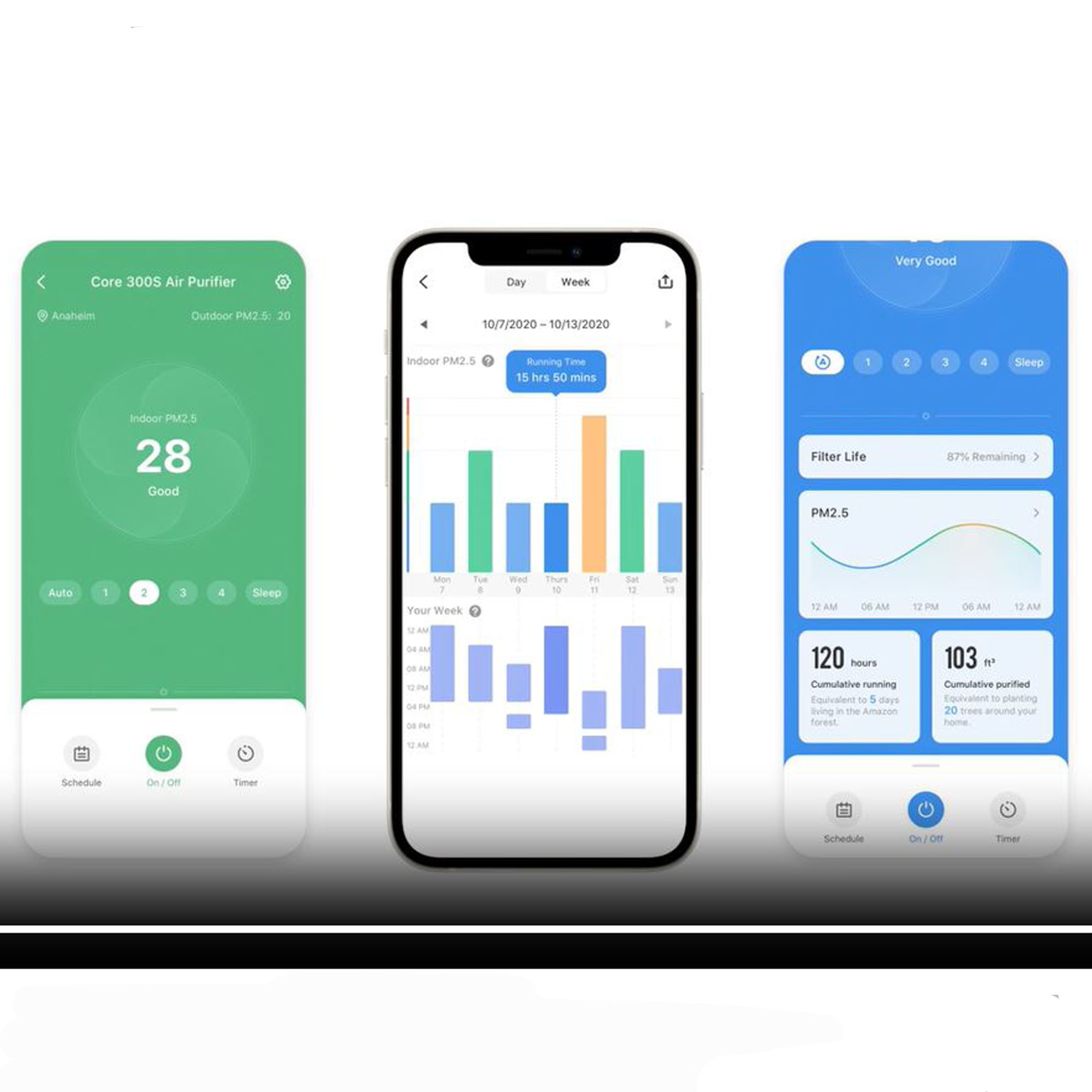
Noise levels
The Levoit Core 300S offers three main fan speeds. The lowest is barely audible, the middle pleasant enough white noise, and the highest fan setting is fairly loud but still a type of white noise that I found easy enough to ignore.
Unlike the other settings, I wouldn’t want the purifier running on the highest fan speed for a long time in a room I was using, and it is loud for overnight use on that setting, whereas the low and middle fan speeds I found quite easy to sleep with.
Sleep mode is far quieter still, using a fan speed lower than fan speed one. This mode also dims the digital display on the top of the air purifier. Although you can also turn the display illumination off at any time using the Display Off button.
Portability
One of the Levoit Core 300S air purifiers big plus points is that it’s relatively compact and lightweight compared to many air purifiers on the market. That makes it very portable – as long as you have two hands free to carry it and can grip its fairly wide 22cm circumference with ease.
Ideally it would come with a built-in carry handle to make transporting it from room to room even easier, because that cylindrical form and smooth exterior can make it hard to grasp onto. But, it was still a lot easier to move than most.
It also has a relatively small footprint. This meant I could pop it onto the kitchen worktop to extract fumes in the kitchen whilst I was cooking – ideal if you're short on the floor space to accomodate a larger air purifier.
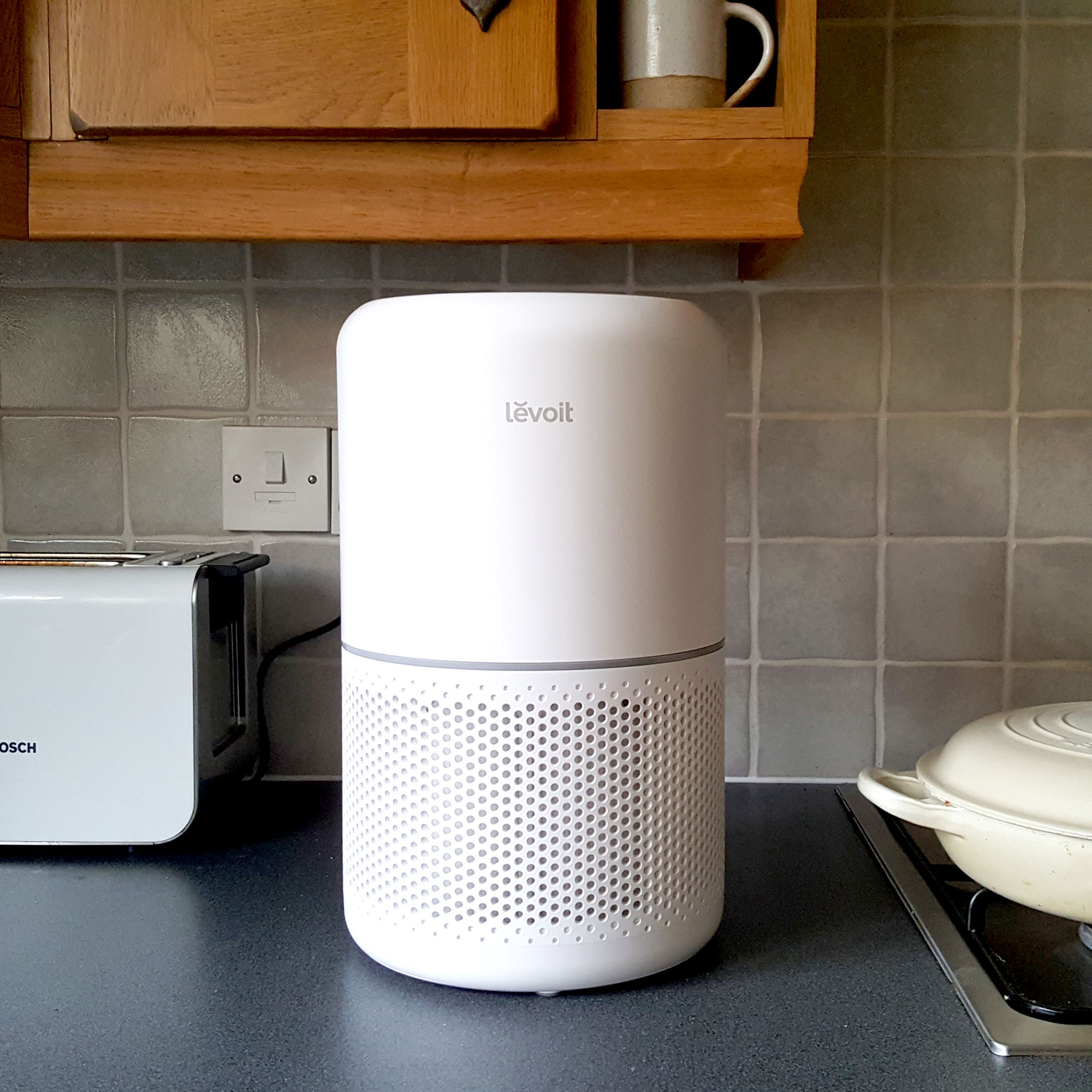
Energy use
The Levoit Core 300S uses a maximum of 23W whilst it's running on its highest setting, and less if you use it on its lower fan speed settings.
That's less energy use than the brand's non-Smart Core 300 model which uses 45W, and relatively low energy use compared to many air purifiers we've tested that average around 50W. However it's not as energy efficient as the very impressive Blueair Blue 3210 Air Purifier that uses just 2-10W of energy.
You can find out more about how much it costs to run an air purifier in our dedicated guide.
Filter replacement
The downside of pretty much every air purifier is that beyond the initial purchase price of the purifier itself, you also need to factor in the ongoing cost of replacing the air filter every so often.
Generally manufacturers advise that an air filter should be replaced roughly every six months as it will gradually become clogged up with particulate and its efficiency therefore reduced.
Levoit advises similarly, recommending the Core 300S air filter is replaced every 6-8 months, and there's a warning light that illuminates when this is necessary. You can also view the filter's 'life percentage' in the VeSync App. The instruction manual advises cleaning the air filter using a soft brush or vacuum hose every 2-4 weeks to prolong its lifespan.
When you do come to replace the filter there are four options to choose from. There's the Original Filter that the purifier comes fitted with as standard, that Levoit says is best for 'allergies, dust, and light odours', and then three additional filters that offer everything the Original Filter does plus some specific added benefits.
There's the Pet Allergy Filter that the brand recommends for 'pet allergies and bad-smelling rooms', the Toxin Absorber Filter which is designed to combat 'high air pollution and smoke', and the Mould and Bacteria Filter that is designed to 'trap and inhibit the growth of bacteria and mould spores'.
All Levoit Core 300S replacement filters cost around £30 as of writing, so not too unreasonable compared to some purifiers.
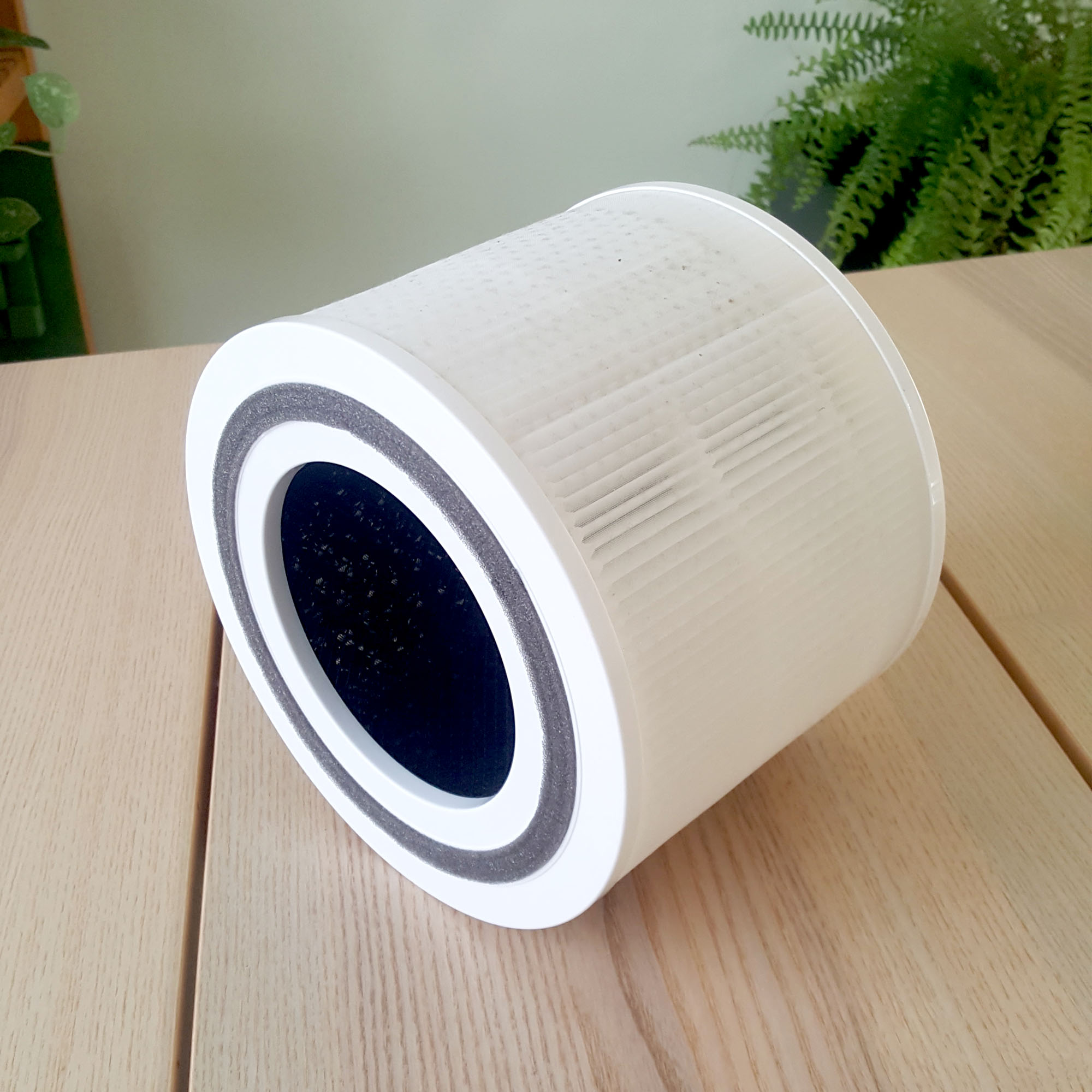
Verdict
Overall, the Levoit Core 300S is an air purifier with a lot going for it. It has a really clear and easy-to-read display panel, easy-to-use on-board controls, and the option to connect the purifier to a Smart App for more detailed real-time data on your home's air quality.
You can also use that App to control the air purifier remotely, or connect it to Amazon Alexa or Google Assistant if you prefer to operate your appliances via voice commands.
It offers an Auto mode, which, if your budget can stretch to the slightly higher price point that usually goes hand-in-hand with this extra functionality, is in my opinion a must-have for hassle-free air quality management. This means you don't have to turn the air purifier on and off manually as it will automatically detect decreases in your home's air quality and jump into gear to manage your indoor climate – particularly useful because not all airborne contaminants are noticable by smell alone, so it can be hard to know when a non-automatic air purifier should be switched on.
That Auto mode also means you'll save on energy when the air purifier is in use as it will switch itself into standby mode as soon as the air quality is of a good level. And, using 23W of power at its maximum fan speed, the Levoit Core 300S is reasonably energy-efficient anyway compared to many models.
Its compact and lightweight design also make it easy to move around the home, as long as you're able to grip its circumference with two hands. And, on all but its highest fan speed, it's very quiet, with a Sleep mode that reduces noise further at night-time, making it a great choice for the bedroom where its small footrpint means it can easily stand on a bedside table if you don't have much floorspace.
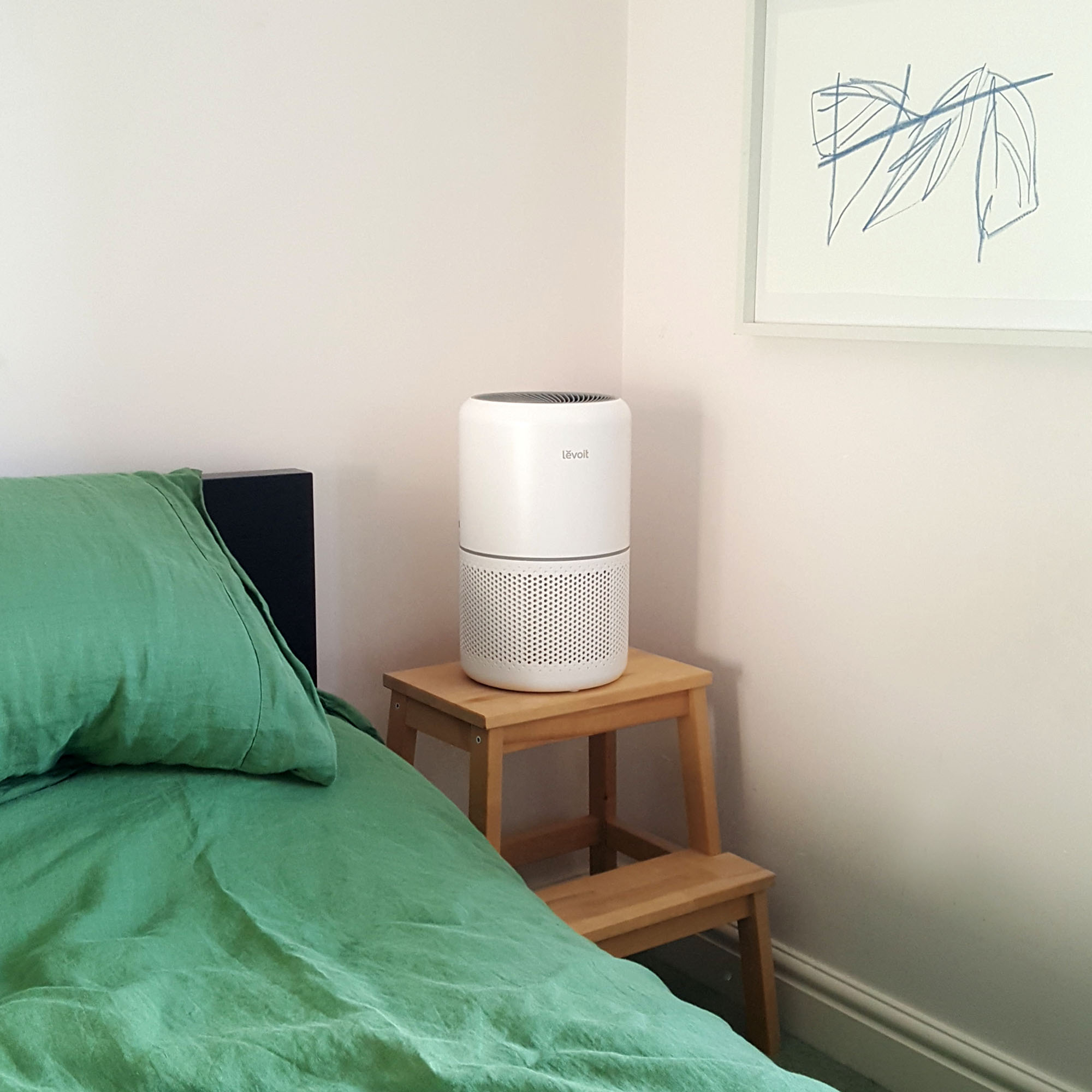
What it does lack is a little power. It's 3-stage Pre-Filter, HEPA Filter and Activated Carbon Filter promises to remove all manner of pollutants from the air, which in our tests it did. However,we did find it did so at a slower rate than comparable machines, such as the Blueair Blue Max 3250i Air Purifier. This is likely because the Levoit Core 300S' air filter is a lot smaller in comparison, and its design means that air is only drawn in through the lower half of the purifier.
That said, Levoit do offer a wide selection of larger and more powerful air purifiers if you want something that can suck in contaminants faster, or you have a large space to purify.
However, if you have smaller rooms and want an air purifier that performs well at a mid-range price point, I think the Levoit Core 300S is a very good buy. In my opinion it's just outranked by the similarly priced Blueair Blue Max 3250i Air Purifier on performance, with the Blueair eliminating airborne contaminants faster and doing a better job of eradicating odours in my at-home tests. But, the Levoit Core 300S is smaller, so it can more easily sit on a work surface, bedside table or shelf, and I found its interface easier to use with a clearer and more intuitive display.

Amy is Ideal Home’s Sleep Editor and the Ideal Home Certified Expert on Sleep. She's spent the last four years researching and writing about what makes for the best night’s sleep during the day and testing out sleep products to find the best-in-class by night. So far she’s clocked up over 10,000 hours of pillow, duvet, and mattress testing experience.
Our go-to for all things sleep-related, she’s slept on and under bestselling products from Simba, Emma, Hypnos, Tempur, Silentnight, Panda, and many many more.
As a hot sleeper, Amy is always on the lookout for the most breathable bedding, but she also leads a wider team of testers to ensure our product testing encompasses both hot sleepers, cold sleepers, front sleepers, back sleepers, side sleepers, and everything in-between.